This post may contain affiliate links. Please read our disclosure policy.
Mongolian Beef is a popular American Chinese takeout dish – but I promise, my version tastes even BETTER than the ones you’ve had at restaurants! The beef is tender and crispy (not oily!) and coated in a sauce that is flavorful, not too sweet, and so delicious! If you prefer chicken, I have a recipe for Mongolian Chicken too!

Watch the Mongolian Beef Recipe Video!
Table of Contents
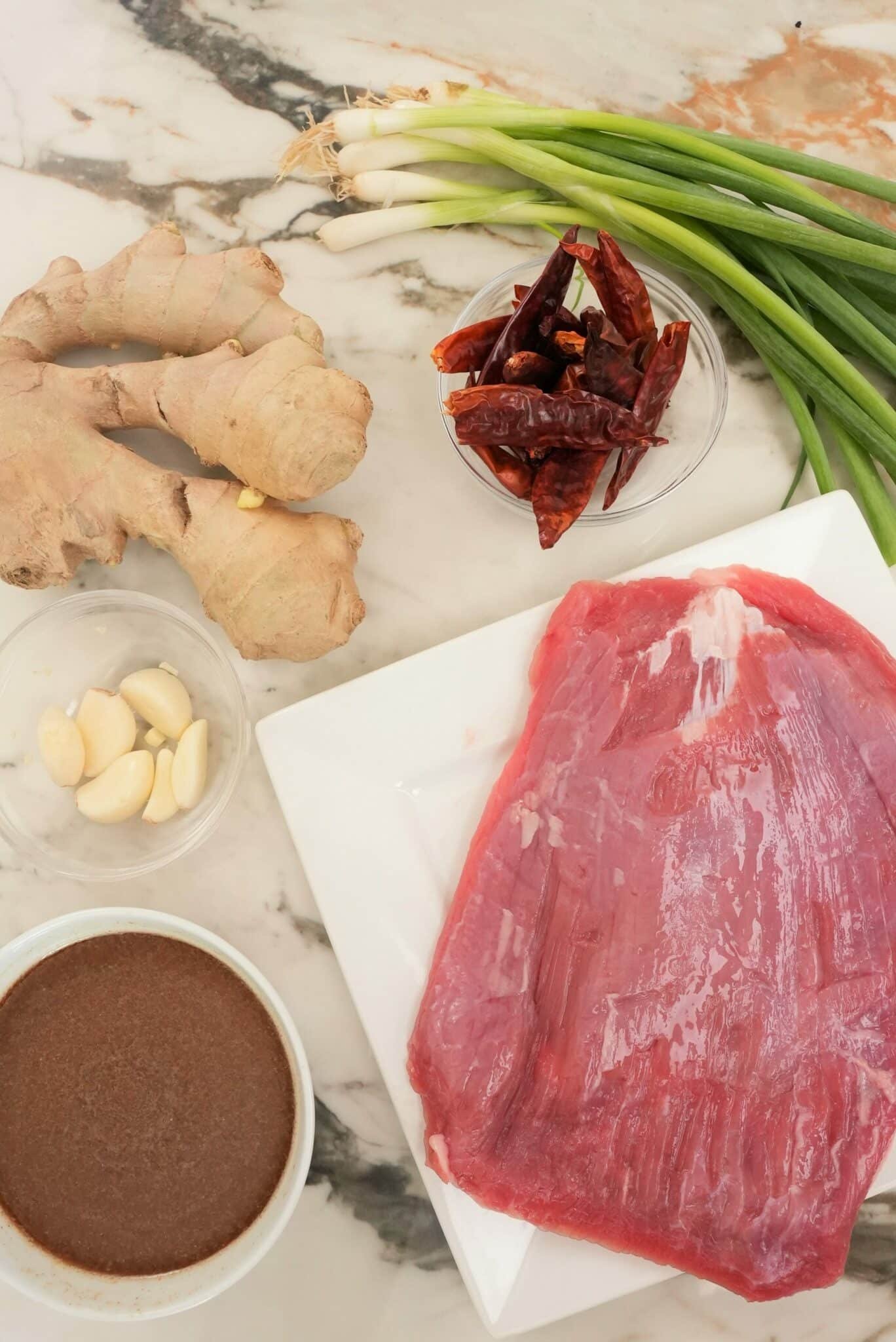
Ingredient Tips
Refer to the recipe card for the full list of ingredients and measurements!
- Sliced Beef – I use flank steak or strip steak. You’ll be slicing the beef AGAINST the grain – when you look at the meat, follow the lines (which is the muscle fibers) and cut against them. Slicing beef against the grain is an easy way to get tender meat – cutting the fibers of the muscle means they won’t get tough when cooked. Other recipes that use flank steak are Beef and Broccoli, Black Pepper Beef, Beijing Beef and Orange Beef!
- Shaoxing wine – This is one of my favorite Chinese pantry staples. It adds a depth of flavor and complexity to the sauce and truly one of my “secret ingredients” for making restaurant quality Chinese food. If you can’t find it, you can substitute with mirin, sherry, or even chicken broth.
- white pepper – I love white pepper and it’s used very commonly in Chinese cooking (another “secret ingredient” for cooking restaurant quality Chinese food at home). It has an earthier flavor than black pepper. I recommend having some in your pantry but if you can’t find it, you can always substitute with black pepper.
- Baking Soda – This is the KEY ingredient to super tender Mongolian beef. Baking soda is commonly used in Chinese cooking to tenderize beef. It neutralizes acid and raises the pH level, which causes the meat to become more alkaline. This causes the protein to have trouble tightening up, which results in more tender meat.
- neutral oil, for frying – My favorite neutral oil is avocado oil, but you can also use canola or vegetable oil! I don’t use olive oil when cooking Chinese food for two reasons: 1. It has a low burning point and 2. The flavor profile does not work with the flavors of Chinese cooking.
- chicken stock – You can also use beef stock (or broth) – if you don’t have either on hand, you can substitute with water.
- Dried Red Chilis – I can find these at most grocery stores – they’re labeled as “dried red chilis” or sometimes “japones chilis”. They’re not super spicy but if you are sensitive to heat, you can adjust by using less chilis OR by removing the seeds. The seeds don’t contain the chemical that make the peppers hot but they are oftentimes coated with oils that make peppers hot.
Recipe Instructions
1. Prepare the Beef
Cut your beef against the grain into 2″ pieces that are 1/4″ thick (refer to photos). Cut the beef into uniform pieces so the Mongolian Beef is cooked evenly.
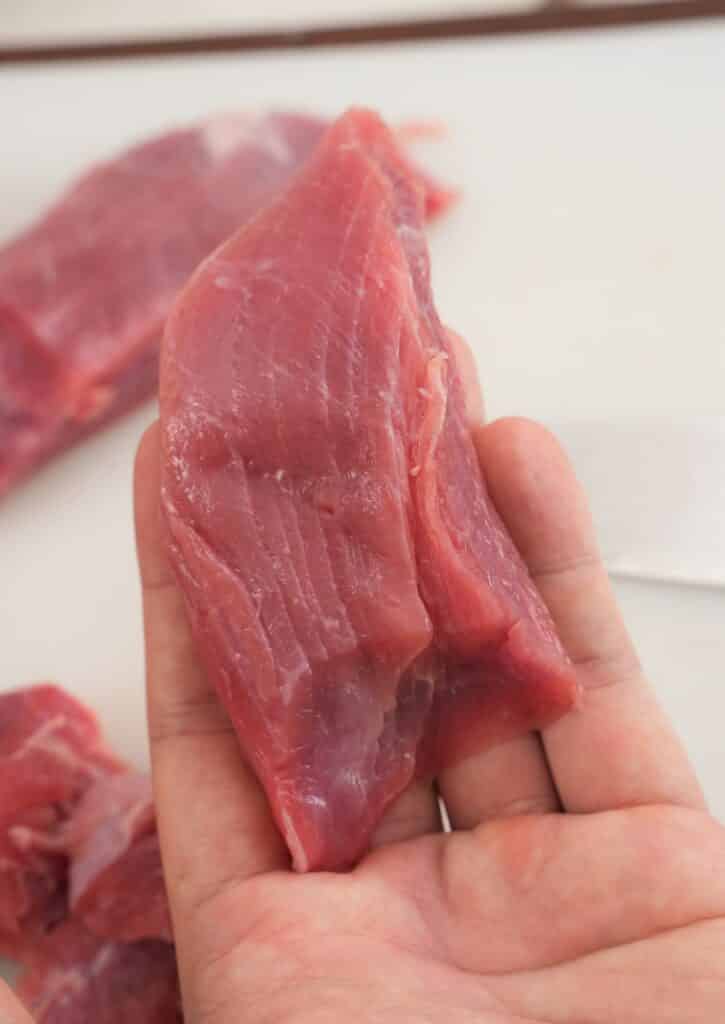
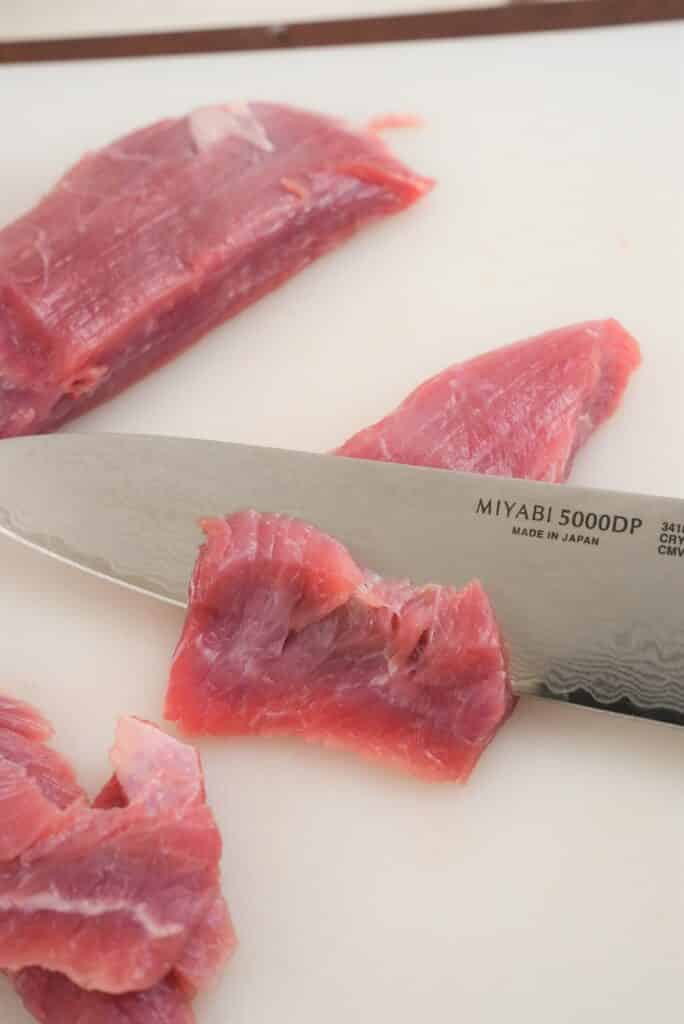
Next, place the sliced beef into a bowl with light soy sauce, shaoxing wine, kosher salt, white pepper, baking soda, cornstarch and neutral oil. Mix well with your hands and let marinate for at least 15-20 minutes.

2. Prepare the Other Ingredients + Mongolian Beef Sauce
While the beef marinates, mince garlic and ginger; set aside in a small bowl. Cut scallions into 3″ pieces; set aside in a second small bowl. Portion out the dried chilis (I used 7 chilis and the dish was a 6 out of 10 for spice; adjust to your spice tolerance) and set aside with the minced garlic and ginger, as well as cut scallions.
Mix the Mongolian Beef sauce – combine chicken stock, light soy sauce, brown sugar, white pepper, and cornstarch. I always like to premix my sauce to have it ready to go during the fast cooking process.
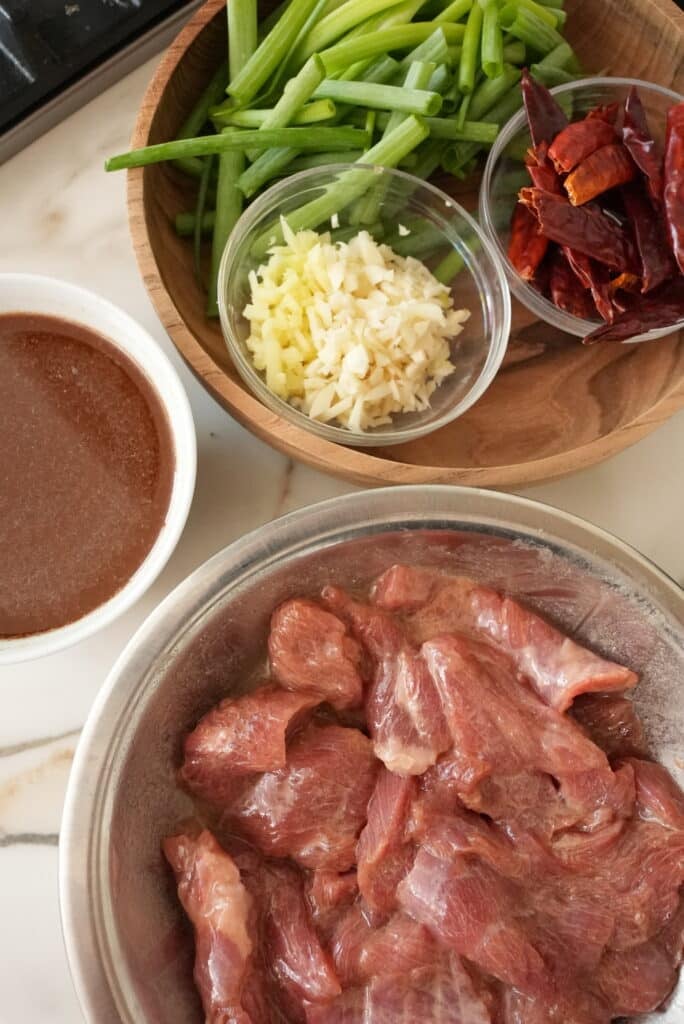
3. Cook the Beef
In a large pan or wok, heat 4 tablespoons of neutral oil (I prefer avocado oil) over high heat (until just smoking). Add the beef, in batches if needed, for 2-3 minutes until golden brown; remove and set the cooked beef aside.
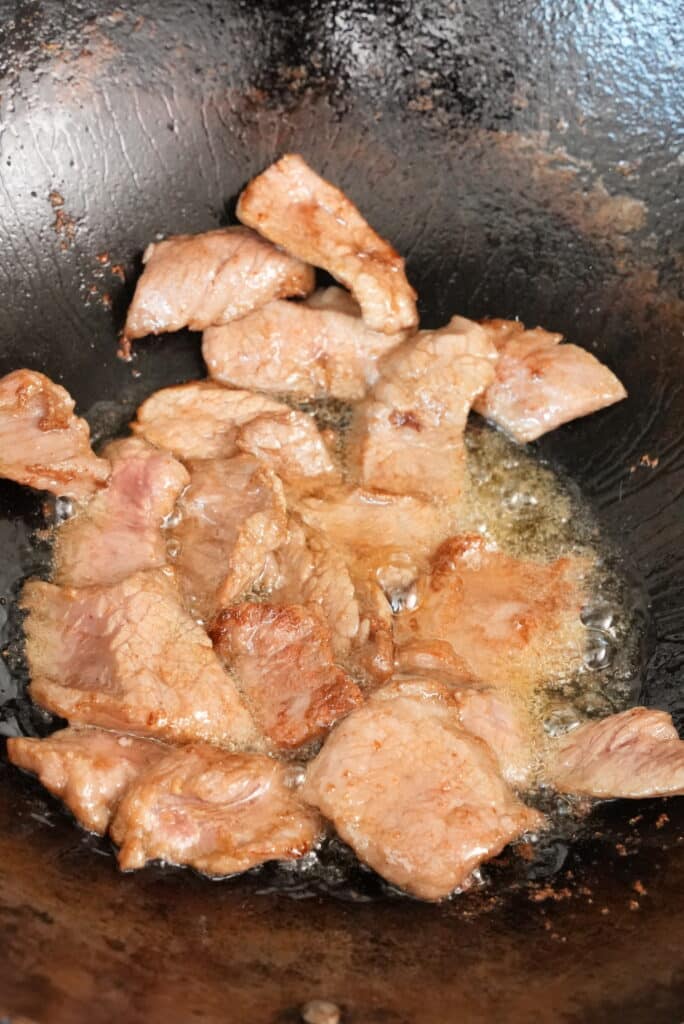
4. Add the Aromatics and Sauce
Once the beef is cooked, remove the excess oil and leave only about 2 tablespoons; in the remaining oil, sauté the minced garlic, ginger, and dried red chilis for 30 seconds, until fragrant.
Add the pre-mixed Mongolian Beef sauce to the aromatics and dried red chilis; stir fry for a minute to let the sauce come to a boil and begin to thicken.

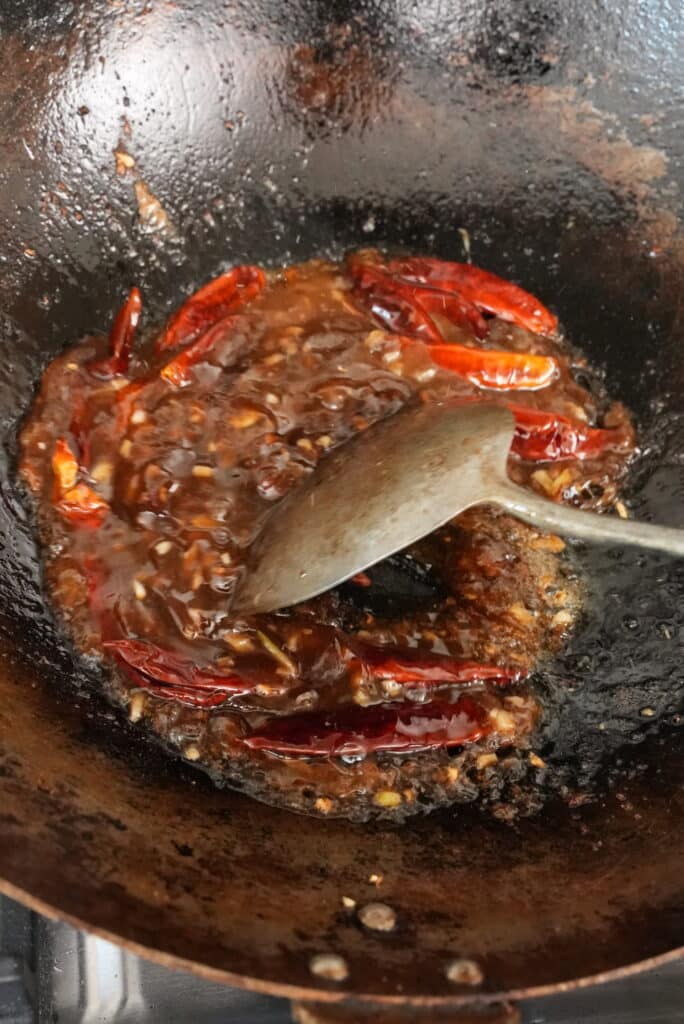
5. Mix Well and Finish!
Into the sauce with aromatics and chilis, add back the cooked beef pieces and scallions. Mix well to incorporate and stir-fry for a final 1-2 minutes; each piece of Mongolian Beef should be evenly coated in the sauce, and the sauce should be thick and glossy (refer to image).
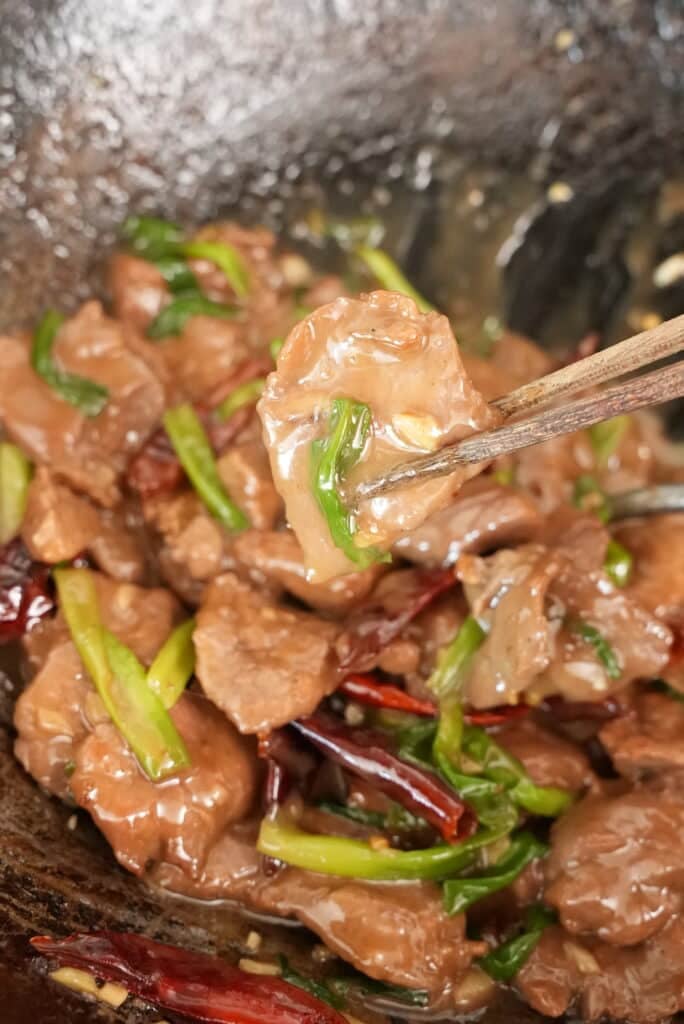
My Pro Tip
Expert Tips
Slice Beef Against the Grain – Follow the lines (which is the muscle fibers) in the raw beef and cut against them. Slicing beef against the grain is an easy way to get tender meat – cutting the fibers of the muscle means they won’t get tough when cooked.
Adjust the Spice to your Preference – The dried red chilis are not super spicy; however, if you want to reduce the heat, you can either use less chilis or remove the seeds from inside. For Mongolian Beef, I used 7 dried red chilis and the finished dish was a 6 out of 10 for spice; adjust accordingly based on your own spice tolerance.
Success is in the Prep! – Mongolian Beef is one of those dishes that comes together FAST once you start cooking. For this reason, it’s crucial that you prepare your ingredients (beef and aromatics cut and portioned, sauce mixed, etc) BEFORE you begin cooking. I like to have all of my ingredients in individual bowls, near my cook station so I can easily grab when needed.
Cooking With a Wok – If it is your first time cooking with a wok, make sure to read my “How To Season a Wok” post. There is a video included that shows exactly how to season your brand new wok and how to maintain it so it lasts for years. If you cannot or do not want to use a wok, you can use a large pan, cast iron, or even a dutch oven.
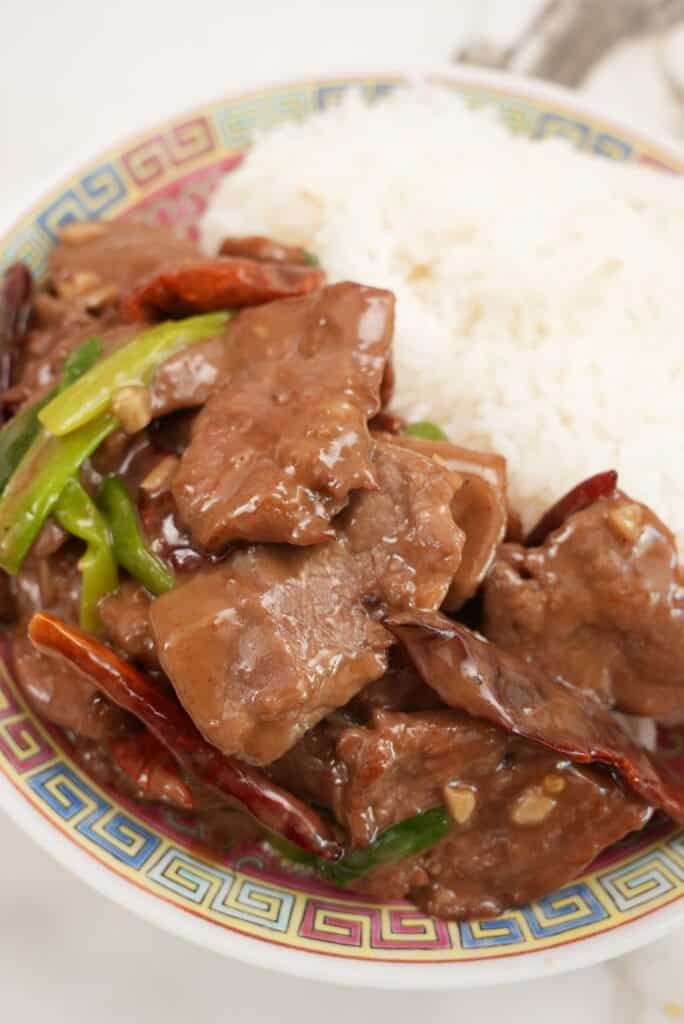
Storage and Reheating
You can store Mongolian Beef in the refrigerator in an airtight container for up to 3 days.
I like reheat it in the air fryer in order to crisp up the beef (if you love air fryer recipes – try my Air Fryer Chicken Wings, Air Fryer Chicken Tenders, or Air Fryer Orange Chicken). When reheating the beef in the air fryer, the sauce with further caramelize and infuse into the crispy batter! Air fry at 350°F for 6-8 minutes or until warmed through and crispy.
Alternatively, reheat in the oven at 350°F for 10-15 minutes until warmed through. I don’t recommend reheating Mongolian Beef (or any fried food) in the microwave unless you don’t care about the texture and just want to heat it back up as quickly as possible.
Make your Perfect Chinese Takeout Meal at Home!
Recreate your favorite Chinese Take-Out meal at home with crispy Egg Rolls, Egg Drop Soup (or Chicken Corn Egg Drop Soup, if you want a heartier version) or Hot and Sour Soup, and some rice – a fluffy Egg Fried Rice or Chicken Fried Rice (if you want shrimp instead, try Shrimp Fried Rice)and Shrimp Lo Mein (if you need a chicken option, try Chicken Lo Mein)! You need some vegetables, so make my super easy Garlic Bok Choy or Din Tai Fung Garlic Green Beans!
If you tried this Mongolian Beef or any other recipe on my website, please leave a 🌟 star rating and let me know how it went in the comments below!
Mongolian Beef
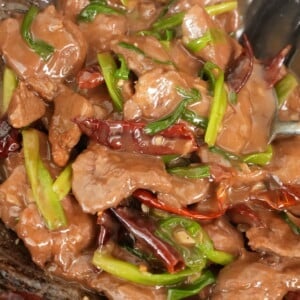
Ingredients
- 1 lb flank steak, cut into 1/4" strips
- 2 tbsp neutral oil, I used avocado oil
- 2 tbsp light soy sauce
- 1 tbsp shaoxing wine
- 1/2 tsp baking soda
- 2 tbsp cornstarch
- 1 tsp white pepper
Sauce
- 1/2 cup light soy sauce
- 1/2 cup chicken stock
- 3 tbsp brown sugar
- 1 tbsp cornstarch
Vegetables & Aromatics
- 6 green onions, cut into 2" pieces
- 5-7 dried red chilis , japones or chile de arbol work well; remove seeds to reduce spice level
- 1 tbsp ginger, minced
- 3 cloves garlic, minminced
Instructions
- Slice your steak into 1/4" strips and marinate with light soy sauce, white pepper, Shaoxing wine, baking soda, neutral oil, and corn starch for 15 minutes.
- Prepare your green onions, garlic, ginger and chilis (deseed the chilis for less heat); set aside.
- Combine light soy sauce, brown sugar, and warm chicken stock mix; mix until sugar is dissolved.
- Heat 4 tbsp of neutral oil in a wok over high heat. Shallow fry the beef for 3-4 minutes at 350F, working in batches if necessary so the oil does not drop below 300F. Fry until golden brown and crisp. Remove and set aside.
- Remove leftover oil until about 2 tbsp of neutral oil remains. Over medium high heat, fry your garlic and ginger for 15-30 seconds then add the dried red chilis. Stir fry for another 15-30 seconds until the chilis are slightly toasted and oils have extracted.
- Add your premixed sauce and stir to combine until the sauce has thickened. Add back your beef and scallions, stir for another 1-2 minutes to coat evenly, and enjoy!
Notes
Nutrition
Nutrition information is automatically calculated, so should only be used as an approximation.

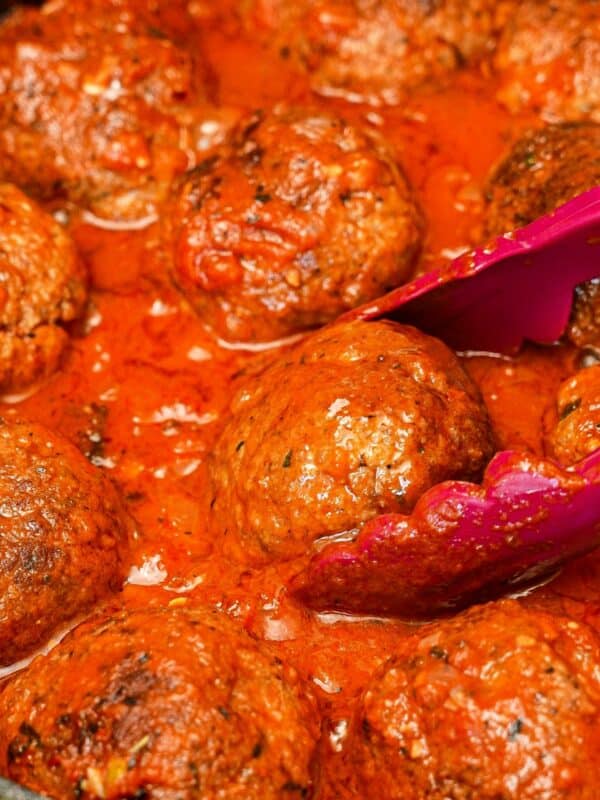
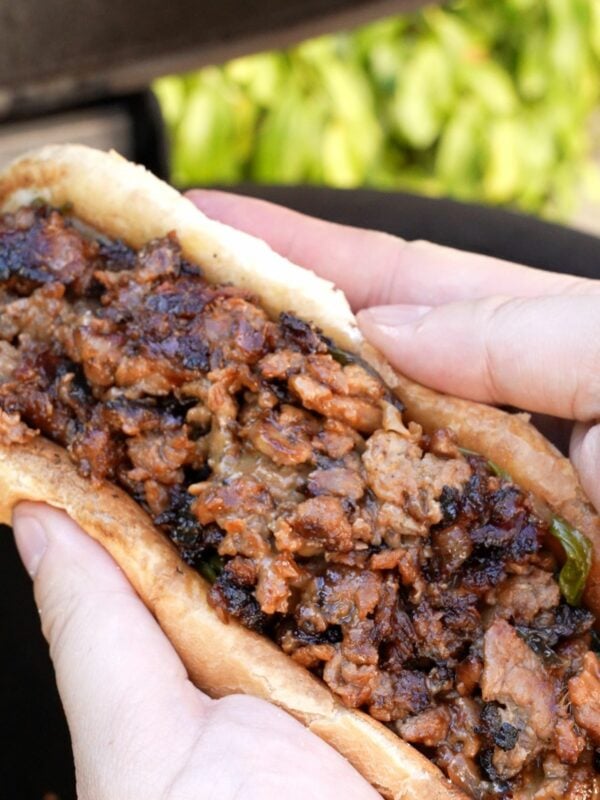

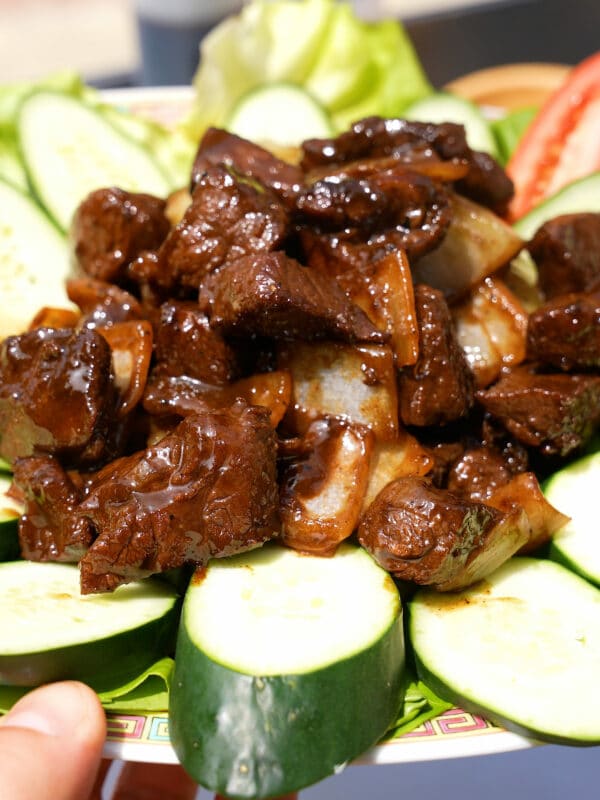







I’ve made this several times for my family and it’s incredible every time. Love your recipes! They’re easy to follow and I usually have the ingredients in my pantry.
Thanks so much Joy!
Made this for my hubs and it was a hit!
Delicious recipe! Thank you! 😋
@jennifer_bhhs
This is my favorite recipe. Made it for my sister who is a very picky eater and she loved it!
Delicious 🙂
@sab.sters
My significant other and I love trying new food we came across your page and it is very easy to follow and this has been our favorite recipe we made it twice in one week the chili pepper add the perfect spice! 10/100 recommend
This is my favorite recipe!!! I love the beef with a little kick and the refreshing green onions!
@jaaanvargas
I’ve been looking for a Mongolian beef recipe with tender beef and this is perfect. Not to sweet and taste exactly how I want. Added in some broccoli and it’s perfect.
IG: reaganshiuu
Super easy to make and came out delicious! First time trying to fry anything and it was a success! Still good as leftovers too!